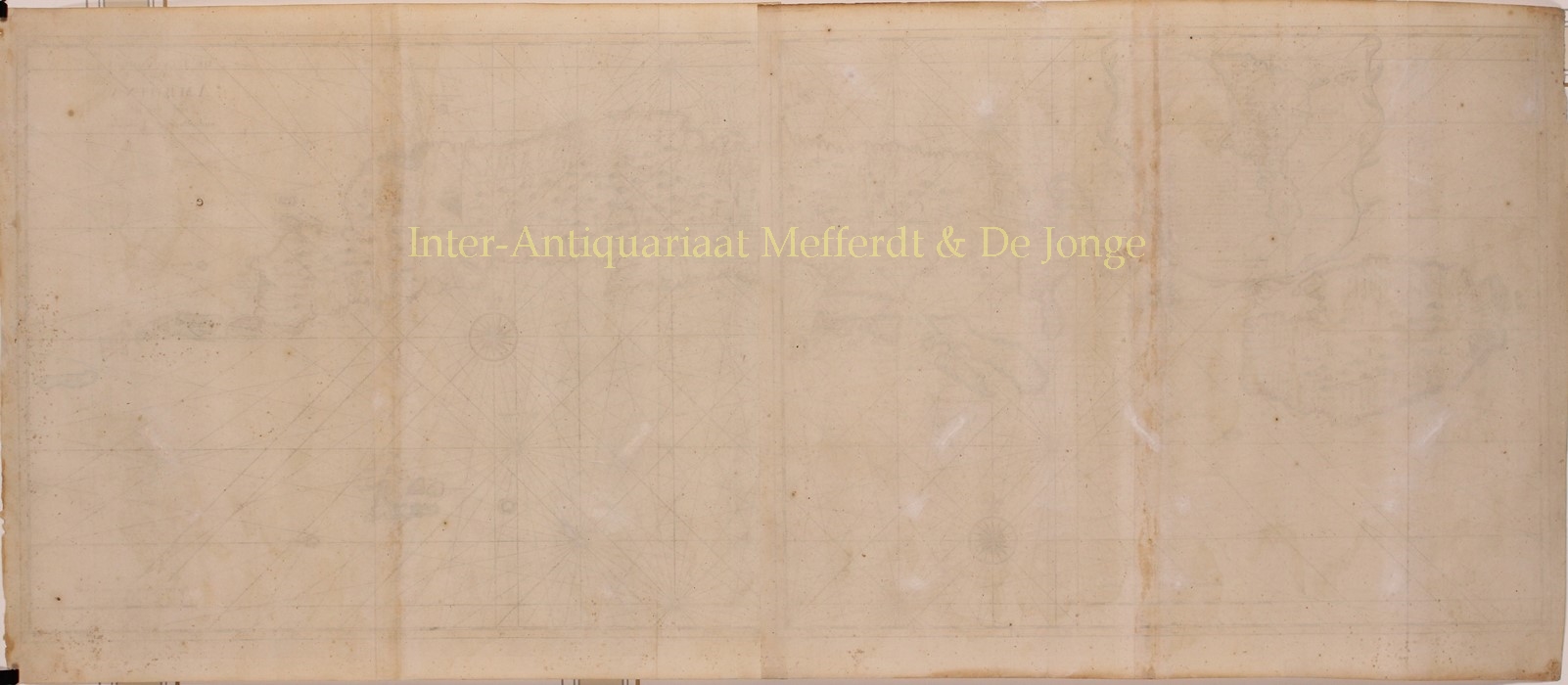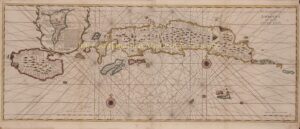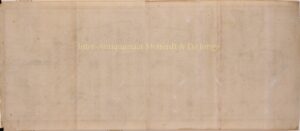Moluccas, Ambon – François Valentijn, 1724-1726
“De Landvoogdy van Amboina met de elf onderhoorige Eylanden” Copper engraving from François Valentijn’s “Oud en Nieuw Oost-Indien”, made by Jan van Braam and published in Dordrecht by Gerard onder de Linden in 1724-1726. Coloured by a later hand. Size: 33 x 79 cm.
The map shows the central islands of the Maluku Archipelago (Moluccas), the famed Spice Islands of Indonesia, including: Ambon, Buru, Ambelau, Manipa, Kelang, Bonoa, Seram, Ceram-laut, Nusa Laut, Saparua (“Honimoa”), and Boang-Besi.
The main island of Seram (called here “Ceram”) was long overshadowed in history by the tiny island of Ambon (here “Amboina“), which during the 16th and 17th centuries was the world capital of clove production. It also lay in close proximity to the Banda Islands, the only native source of nutmeg, which during the 17th century was the world’s most valuable spice.
Portugal was the first European power to establish itself in the region, during the early 16th Century. While it endeavoured to exploit the region’s riches, it largely left the islands under the political control of their traditional rulers. During the early 17th century the Dutch East India Company (VOC) and the English East Indian Company (EIC) expelled the Portuguese presence.
The Dutch and English soon turned on each other, as both sides were driven with greed over the islands’ phenomenal wealth in spices. The decisive event in the struggle was the ‘Amboyna Massacre’ of 1623, during which the Dutch tortured and killed twenty Englishmen in cold blood. While the event tarred the reputation of the VOC and poisoned Anglo-Dutch relations for decades, the VOC managed to expel the EIC from the region, resulting in great commercial gain. The Dutch would dominate the area until Indonesian independence in 1949.
François Valentijn was a prominent historian of the Dutch East India Company who is best known for “Oud en Nieuw Oost Indiën”, his vast illustrated account of the Dutch trading empire in Asia. He travelled to the East Indies twice and served as Calvinist minister to Ambon between 1686 and 1694. In preparing this monumental work, he was given privileged access to the previously secret archives of the VOC, containing transcripts and copies of important earlier Dutch voyages.
While Valentijn’s maps and diagrams were prized possessions, his scholarship, judging by 21st century standards was unscrupulous. Valentijn’s use of the products of other scientists’ and writers’ intellectual labour and his passing it off as his own, reveals a penchant for self-aggrandisement.
Price: SOLD





